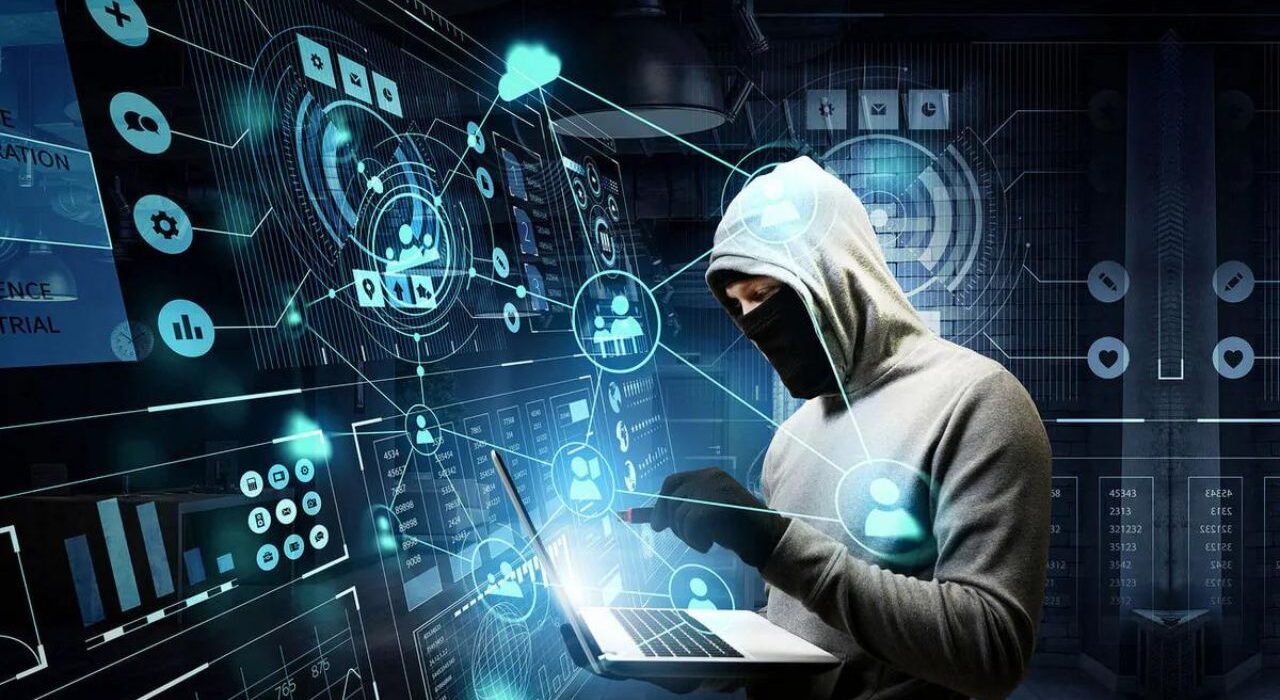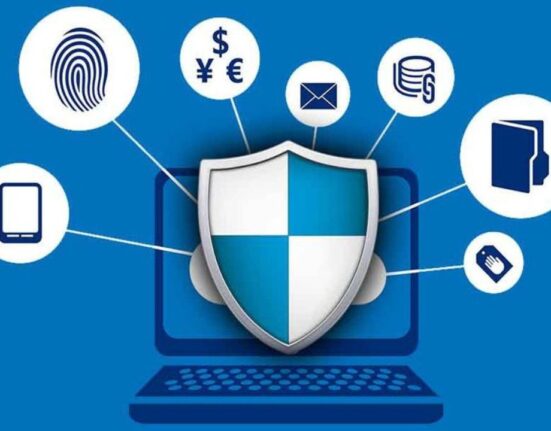Historical Hacker Attacks on US Companies and Lessons Learned, Historical hacker attacks on US companies, like the Equifax breach 2017, underscore the need for robust cybersecurity measures. Lessons include enhancing data encryption, improving network monitoring, and prioritizing prompt responses to threats to safeguard sensitive information and maintain customer trust.
The Hacker Attacks on US Companies and Lessons Learned
The United States has faced a series of significant cyberattacks targeting its companies. These attacks have caused financial losses and raised concerns about national security and the protection of sensitive data. In this article, we delve into some of the most notable historical hacker attacks on US companies, analyzing the methods employed by cybercriminals and the lessons learned from these incidents.
10 Biggest Cyber Attacks in History
-
The Melissa Virus
The Melissa Virus, created by David L. Smith in 1999, is one of the earliest and most notorious instances of cybercrime. It spreads via email, luring recipients with enticing subject lines and attachments. Once opened, the virus replicated itself and sent copies to the first 50 contacts in the victim’s address book, overwhelming email servers and causing widespread disruption.
-
NASA Cyber Attack
In 2002, hackers infiltrated NASA’s systems, compromising sensitive information and posing a significant threat to the agency’s operations. The attack highlighted vulnerabilities in government cybersecurity measures and underscored the importance of robust defenses against cyber threats for critical infrastructure.
-
The 2007 Estonia Cyber Attack
Estonia faced cyber attacks in 2007, targeting government institutions, banks, media outlets, and other critical infrastructure. These attacks believed to be orchestrated by Russian hackers, disrupted essential services and raised concerns about the growing use of cyber warfare tactics between nations.
-
A Cyber Attack on Sony’s PlayStation Network
In 2011, Sony’s PlayStation Network suffered a massive cyber attack, compromising the personal information of millions of users, including credit card details. The breach resulted in significant financial losses for Sony and raised concerns about the security of online gaming platforms.
-
Adobe Cyber Attack
In 2013, Adobe experienced a cyber attack where hackers gained unauthorized access to customer data, including usernames, passwords, and credit card information. The breach affected millions of Adobe users and highlighted the need for companies to bolster their cybersecurity measures to protect sensitive data.
-
The 2014 Cyber Attack on Yahoo
Yahoo experienced one of the largest data breaches in history in 2014 when hackers stole the personal information of over 500 million users. The breach, which went undetected for years, compromised usernames, email addresses, and encrypted passwords, underscoring the challenges companies face in safeguarding user data.
-
Ukraine’s Power Grid Attack
In 2015 and 2016, Ukraine’s power grid was attacked by cybercriminals, resulting in widespread blackouts and disruption of essential services. The attacks, attributed to Russian hackers, marked one of the first instances of cyber warfare directly impacting a nation’s infrastructure, raising concerns about the vulnerability of critical systems to digital threats.
-
2017 WannaCry Ransomware Cyber Attack
The WannaCry ransomware attack 2017 infected hundreds of thousands of computers worldwide, encrypting data and demanding ransom payments in Bitcoin. The attack targeted vulnerable systems running outdated versions of Windows, highlighting the importance of regular software updates and cybersecurity hygiene.
-
A Cyber Attack on Marriott Hotels
Marriott Hotels suffered a massive data breach in 2018, exposing the personal information of approximately 500 million guests. The breach, which spanned several years, compromised sensitive data such as passport numbers, payment card details, and contact information, illustrating the significant impact of cyber attacks on the hospitality industry.
-
The Biggest Password Leak Yet
Two thousand nineteen, one of the largest password leaks occurred when a collection of over 2.2 billion unique usernames and passwords was discovered on the dark web. The leak, known as Collection #1, highlighted the pervasive threat of credential stuffing attacks and the importance of using strong, unique passwords to protect online accounts.
The Target Breach
One of the most infamous cyberattacks in recent memory is the Target breach of 2013. Hackers gained access to the retail giant’s network through a third-party HVAC vendor, compromising the personal and financial information of over 110 million customers. The breach highlighted the importance of robust cybersecurity measures and the need to vet third-party vendors thoroughly.
The Equifax Data Breach
Equifax, one of the largest credit reporting agencies in the US, fell victim to a massive data breach. Hackers exploited a vulnerability in the company’s website, exposing the sensitive information of approximately 147 million consumers. This incident underscored the critical need for proactive security measures, timely software updates, and effective incident response protocols.
The Sony Pictures Hack
Sony Pictures Entertainment experienced a devastating cyberattack attributed to North Korean hackers. The breach resulted in the theft of confidential data, including unreleased films, internal communications, and employees’ personal information. The incident highlighted the importance of robust cybersecurity defenses, employee awareness training, and geopolitical considerations in cyber defense strategies.
Lessons Learned
These historical hacker attacks on US companies offer valuable lessons for businesses and organizations looking to enhance their cybersecurity posture:
-
Prioritize Cybersecurity Investment
Investing in cybersecurity infrastructure, including firewalls, intrusion detection systems, and encryption technologies, is essential for protecting sensitive data and mitigating the risk of cyberattacks.
-
Conduct Regular Security Audits
Regular security audits and vulnerability assessments can help identify and address potential weaknesses in an organization’s network infrastructure before malicious actors can exploit them.
-
Educate Employees on Cyber Threats
Employee training programs on cybersecurity best practices, phishing awareness, and incident response protocols are critical for building a culture of security awareness and empowering employees to recognize and report suspicious activity.
-
Implement Multi-Factor Authentication
Enforcing multi-factor authentication (MFA) for accessing sensitive systems and data adds an extra layer of security, making it more difficult for unauthorized individuals to gain access even if login credentials are compromised.
-
Foster Collaboration and Information Sharing
Collaboration among industry peers, government agencies, and cybersecurity experts is essential for sharing threat intelligence, identifying emerging threats, and developing effective countermeasures to protect against cyberattacks.
Historical Hacker Attacks on US Companies: Learning from the Past
The landscape of cyber warfare has evolved significantly. Due to their prominence and influence, US companies have been prime targets for hacker attacks. Understanding the historical context of these attacks can provide invaluable insights into bolstering cybersecurity defenses and mitigating future risks.
The Notorious Attacks
Over the years, US companies have fallen victim to many hacker attacks, each leaving a trail of devastation in its wake. These incidents have underscored the vulnerabilities inherent in modern digital infrastructure, from the infamous Equifax breach of 2017 to the widespread WannaCry ransomware attack in 2018.
Lessons Learned
Despite the chaos and damage wrought by these attacks, they have also served as invaluable learning experiences. One of the most crucial lessons is the importance of robust cybersecurity measures. Implementing multi-layered security protocols, including encryption, firewalls, and intrusion detection systems, is essential for safeguarding sensitive data and thwarting potential threats.
Proactive Vigilance
Furthermore, proactive vigilance is paramount in the ongoing battle against cyber threats. Regular security audits and penetration testing can help identify vulnerabilities before malicious actors exploit them. Additionally, fostering a culture of cybersecurity awareness among employees through comprehensive training programs can significantly reduce the risk of human error leading to breaches.
Collaborative Defense
Collaboration is key in the face of increasingly sophisticated cyber threats. US companies must collaborate with government agencies, cybersecurity experts, and industry peers to share threat intelligence and best practices. By pooling resources and expertise, collective defense mechanisms can be strengthened, raising the barrier against potential attacks.
Adaptability and Resilience
Cultivating adaptability and resilience is essential for navigating the ever-evolving cyber landscape. Companies must remain agile in their response strategies as hackers devise new techniques and exploit emerging vulnerabilities. This includes investing in cutting-edge technologies such as artificial intelligence and machine learning to detect and mitigate threats in real time.
Some Points of Historical Hacker Attacks on US Companies and Lessons Learned

Historical Hacker Attacks on US Companies Learning from the Past 2020: Significant cyber breaches targeting US-based companies, emphasizing lessons learned from past incidents, particularly in the tumultuous year 2020. It explores the evolution of cyber threats, tactics employed by hackers, and measures organizations take to fortify their defenses in response to these attacks.
NASA Cyber Attack: A cyber intrusion targeting the National Aeronautics and Space Administration (NASA), a prominent United States government space agency. The attack may involve unauthorized access to NASA’s systems, potential data breaches, or disruption of critical operations. It highlights the vulnerability of highly advanced technological entities to cyber threats.
Biggest Cyber Attacks in History: The most massive cyber assaults ever recorded, spanning various sectors such as government, finance, healthcare, and technology. It examines the magnitude of the attacks, their impact on affected entities and individuals, and the enduring repercussions on cybersecurity practices globally.
Biggest Cyber Attacks in the Last 5 Years: Focusing on recent history, this topic scrutinizes the most significant cyber breaches occurring within the past five years. It provides insights into evolving cyber threat landscapes, emerging attack vectors, and the escalating sophistication of cybercriminal activities during this period.
History of Cyber Attacks: The origins and evolution of cyber attacks from their inception to contemporary times. It encompasses landmark incidents, pivotal advancements in cybersecurity technologies, and the changing tactics employed by threat actors over the years, offering a comprehensive narrative of the cyber warfare landscape.
Top 10 Cyber Attacks in the World: Addressing the global scale of cyber threats, this topic identifies and analyzes the ten most impactful cyber assaults worldwide. It highlights the diverse nature of these attacks, ranging from data breaches and ransomware incidents to espionage and sabotage, and underscores their ramifications on international security and stability.
Biggest Cyber Attacks on Companies: Focusing on corporate entities, this subject explores major cyber breaches targeting businesses across industries. It examines the vulnerabilities hackers exploit, the financial and reputational losses incurred by affected companies, and the strategies adopted to mitigate future cyber risks.
First Cyber Attack in History: The inaugural instance of a cyber assault, marking the dawn of cyber warfare. It delves into the context, methods, and consequences of the pioneering attack, laying the foundation for subsequent developments in cybersecurity and shaping contemporary perceptions of digital threats.
Conclusion
The historical hacker attacks on US companies serve as sobering reminders of the ever-evolving cyber threat landscape and the importance of robust cybersecurity measures. By learning from these incidents and implementing proactive security strategies, organizations can better protect themselves against cyber threats and safeguard their sensitive data and assets.
FAQ
What is the Biggest Hacker Attack in History?
The biggest hacker attack in history was the WannaCry ransomware attack in May 2017. It infected over 200,000 computers across 150 countries, causing widespread disruption to businesses and organizations and damages estimated in the billions of dollars.
What is the Most Famous Cyber Attack in the US?
The most famous cyber attack in the US is the 2017 Equifax breach. Hackers accessed sensitive personal information of 147 million Americans, including Social Security numbers. This breach raised significant concerns about cybersecurity and consumer data protection nationwide.
Have any Big Companies Been Hacked?
Yes, numerous big companies have been hacked, including Equifax, Yahoo, Sony, Target, and Marriott. These incidents have resulted in significant data breaches, compromising millions of customer’s personal information and causing financial and reputational damage.
What is the Mother of All Data Breaches?
The mother of all data breaches refers to the 2013 cyberattack on Yahoo!, which compromised 3 billion user accounts. It is one of the largest breaches in history, revealing personal information like names, email addresses, phone numbers, and hashed passwords.
Who is the Top 1 Hacker in History?
It’s difficult to definitively determine the “top” hacker, but Kevin Mitnick is often considered one of the most notorious. In the 1980s and 1990s, he gained infamy for his high-profile computer intrusions, including those into major corporations and government agencies.
What is the Most Famous Hack in History?
The most famous hack in history is arguably the 2016 breach of the Democratic National Committee’s email system. Perpetrated by Russian hackers, it led to the release of sensitive information, impacting the US presidential election and sparking international controversy and investigations.




